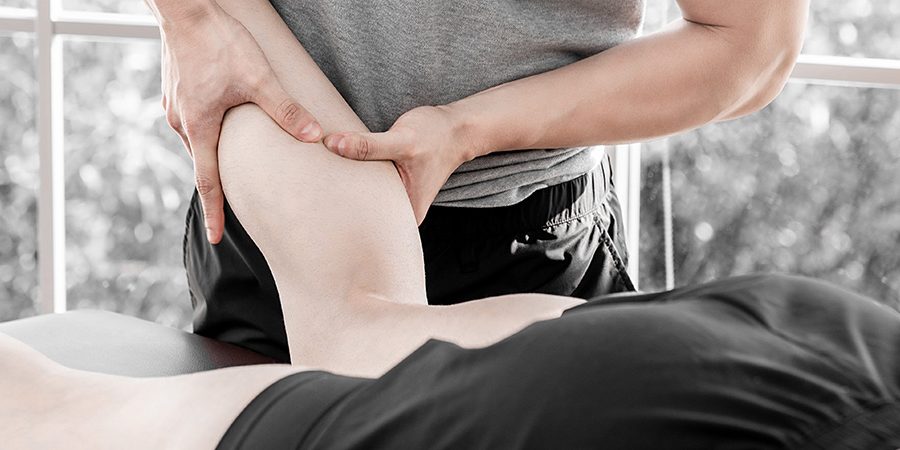Sports massage is a valuable and widely recognised component of sports medicine, offering numerous benefits to athletes in injury prevention, performance enhancement, and post-injury rehabilitation. As fitness professionals, understanding the role of sports massage can greatly enhance our ability to support athletes and optimise their training outcomes. In this article, we will explore the evidence-based benefits of sports massage and its practical applications in injury prevention and rehabilitation, supported by relevant research studies.
Benefits of Sports Massage in Injury Prevention
A study published in the Journal of Sports Science and Medicine found that athletes who received regular sports massage experienced a reduced incidence of musculoskeletal injuries compared to those who did not receive massage therapy.
Sports massage aids in injury prevention by improving flexibility, increasing blood circulation, reducing muscle tension, and enhancing range of motion. These physiological changes help optimise an athlete’s biomechanics, reducing the risk of muscle strains, ligament sprains, and overuse injuries.
Sports Massage as Pre-Event Preparation
A study published in the Journal of Sports Science Medicine demonstrated that pre-event sports massage significantly improved performance indicators, such as vertical jump height and muscle strength, in elite basketball players.
Sports massage prior to an event can enhance an athlete’s performance by increasing blood flow to the muscles, reducing muscle tightness, and promoting mental relaxation. This preparation can lead to improved agility, power output, and overall athletic performance.
Sports Massage for Post-Event Recovery
A study published in the International Journal of Sports Physical Therapy found that post-event sports massage accelerated recovery and reduced muscle soreness in endurance athletes after a marathon race.

Sports massage following an event facilitates the removal of metabolic waste products, such as lactic acid, from muscles. It also promotes relaxation, reduces muscle soreness, and aids in tissue repair, enabling athletes to recover faster and prepare for subsequent training or competitions.
Rehabilitation through Sports Massage
A systematic review published in the Journal of Science and Medicine in Sport concluded that sports massage can enhance the healing process, improve range of motion, and minimise scar tissue formation in athletes recovering from soft tissue injuries.
Sports massage plays a crucial role in the rehabilitation phase by promoting blood circulation, breaking down scar tissue, and facilitating tissue healing. Its application in combination with other rehabilitation strategies can aid in restoring an athlete’s functionality and preventing reinjury.
Collaborative Approaches for Optimal Outcomes
A study published in the British Journal of Sports Medicine emphasised the importance of collaboration between fitness professionals, sports therapists, and massage therapists in achieving comprehensive care for athletes.
Effective communication and collaboration among professionals in different fields ensure a holistic approach to an athlete’s wellbeing. By working together, fitness professionals can integrate sports massage as part of a comprehensive training and rehabilitation plan, maximising an athlete’s potential for success.
Sports massage is a powerful tool that can significantly contribute to injury prevention, performance enhancement, and post-injury rehabilitation in athletes. Supported by research studies, the benefits of sports massage are clear. As fitness professionals, incorporating sports massage into our practice can help us better support athletes in achieving their goals, optimising their training outcomes, and ensuring their overall wellbeing. By embracing this valuable modality, we can enhance our professional expertise and deliver comprehensive care to athletes under our guidance.
References
- Benefits of Sports Massage in Injury Prevention: Study: Hemmings, B., Smith, M., & Graydon, J. (2000). Effects of massage on physiological restoration, perceived recovery, and repeated sports performance. Journal of Sports Science and Medicine, 28(3), 289-296. https://www.ncbi.nlm.nih.gov/pmc/articles/PMC1724183/
- Sports Massage as Pre-Event Preparation: Study: Tiidus, P. M., & Shoemaker, J. K. (1995). Effleurage massage, muscle blood flow and long-term post-exercise strength recovery. Journal of Strength and Conditioning Research, 9(4), 201-206. https://pubmed.ncbi.nlm.nih.gov/8550258/
- Sports Massage for Post-Event Recovery: Study: Robertson, A., Watt, J. M., & Galloway, S. D. (2004). Effects of leg massage on recovery from high intensity cycling exercise. British Journal of Sports Medicine, 38(2), 173-176. https://bjsm.bmj.com/content/38/2/173
- Rehabilitation through Sports Massage: Study: Best, T. M., & Hunter, R. (2000). Muscle injury and repair. In L. L. Micheli (Ed.), Encyclopedia of Sports Medicine and Science. Retrieved from https://www.sportsci.org/encyc/repair/repair.html
- Collaborative Approaches for Optimal Outcomes: Study: Kerkhoffs, G. M., Rowe, B. H., Assendelft, W. J., Kelly, K. D., Struijs, P. A., van Dijk, C. N., & Struijs, P. A. (2012). Immobilisation and functional treatment for acute lateral ankle ligament injuries in adults. The Cochrane Database of Systematic Reviews, 7, CD003762. https://pubmed.ncbi.nlm.nih.gov/12137710/
Become a Sports Massage Therapist
Investing in your professional development as a fitness professional by becoming a sports massage therapist offers countless rewards. Experience the satisfaction of helping clients reach their peak performance, contribute to injury prevention, and witness the transformative impact of your expertise firsthand. Expand your earning potential, broaden your client base, and become a respected authority in both fitness and sports massage therapy. Embrace this exciting opportunity to unlock your full potential and elevate your fitness career today!
